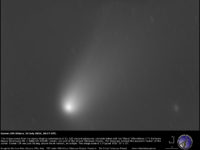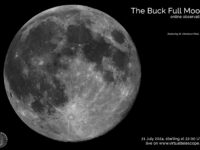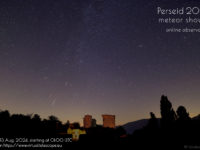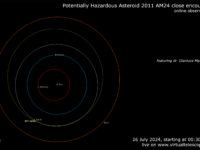NGC 6960, an elegant veil on a drama
NGC 6960 is one of the most famous, though not-obvious-to-see, deep sky objects in the sky. It is part of a complex structure we call the “Cygnus Loop”, the remnant of a dramatic, galactic supernova explosion happened about 15.000 years ago.
The image above comes from the sigma-clipping combination of 15, 120-seconds exposures, unfiltered, remotely taken with the 16″-f/3.75 Tenagra III (“Pearl”) robotic unit part of Tenagra Observatories in Arizona. A last-quarter Moon was high in the sky, but the results are amazing.
NGC 6960 is part of the vast “Veil” nebula in Cygnus. It is one of the most spectacular supernova remnants we find in our Milky Way. It is the outcome of a big mass star exploded around 15.000 years ago, during Upper Paleolithic. It is so fascinating to imagine our ancestors, the first early modern humans, looking at that bright blast and wondering about its mysterious nature.
NGC 6960 is on the western side of the “Cygnus Loop” and the bright star 52 Cygni seems like a diamond nestled in that delicate veil of gas. The horizontal line crossing the star is an artifact, called “blooming”, due to its extreme brightness.
The distance of this nebula is estimated around 1400 light years, while its linear dimension is about 35 light years.
The image above, thanks to the exceptional location of the telescope (Sonoran desert, Arizona, USA) reveals a lot of fine details, as well as many subtle nebular regions all around.
Support The Virtual Telescope Project!
Support us! Please, donate and receive an EXCLUSIVE image of potentially hazardous asteroid 2011 UL21, taken at the time of its fly-by and much more, specifically made for supporters like you!
(you can adjust the amount later)










